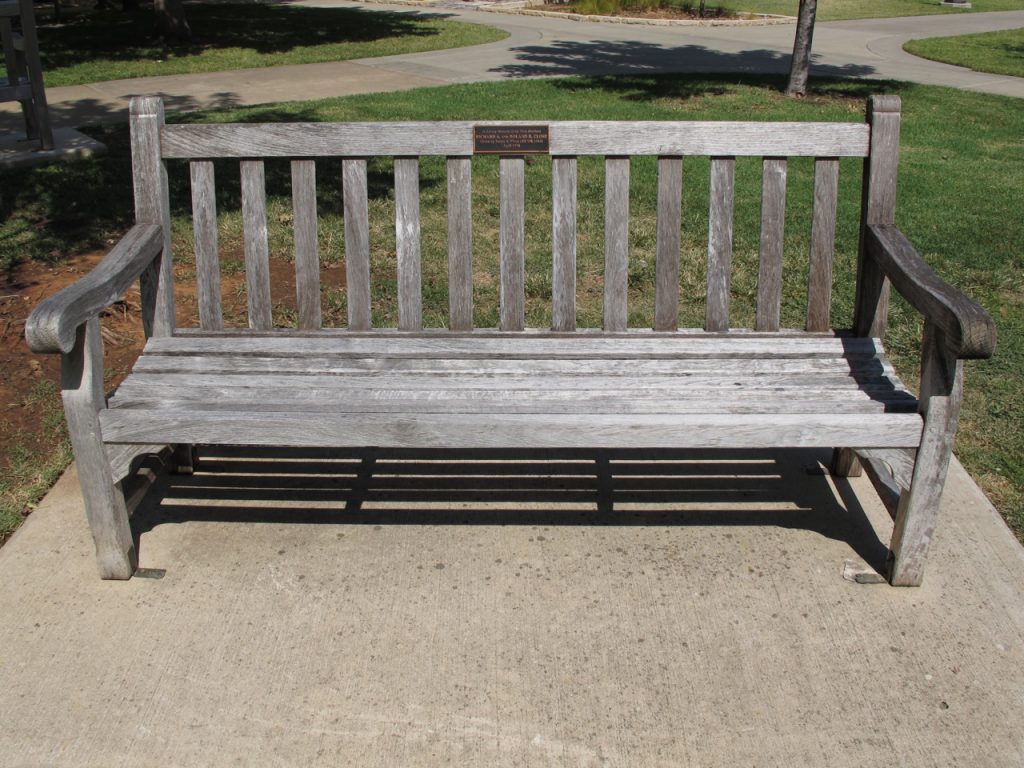We may receive a commission when you use our affiliate links. However, this does not impact our recommendations.

A teak bench holds up well outdoors without a finish.
A relative of mine wanted to know what finish is best to use on an outdoor oak bench he intended to make. Was it spar varnish, or is there something better?
First, to address the wood. He didn’t say what type of oak he intended to use, so I pointed out that white oak would be better than red oak for outdoors because white oak would hold up pretty well without a finish. Teak would be even better; it would hold up without a finish for decades, at a minimum. Many other “jungle” woods would also, but most are very hard and difficult to work.
Concerning the finish, I assumed the bench was going to be exposed to sun and rain all year round, in which case, no finish will hold up for more than a few years because there won’t be a way to keep water from getting underneath and causing the finish (or paint) to peel. You can’t caulk a bench like you do the framing around windows.
Best Finishes for Outdoors
If he insists on applying a finish, maybe for looks or to make the surface smoother, a boat varnish from a marina would be best because it would hold up better against the sun’s UV light. Common brands include Interlux, Epifanes, Pettit and Z-Spar. They can be bought from Amazon. But they will still peel when water gets underneath.
The question of what finish to use on exterior wood is a common one. I’ve written about this in many articles and in all three of my books. Nevertheless, the question still comes up often. I think it’s because there is no shortage of exaggerated claims, from manufacturers, in magazine articles, in books, and from one friend to another. So lots of people continue to believe there must be a magical product out there somewhere, even though their experience tells them otherwise.
Here are some supplies and tools we find essential in our everyday work around the shop. We may receive a commission from sales referred by our links; however, we have carefully selected these products for their usefulness and quality.









Note that I’m saying there are coatings that will protect fairly well against UV light. But the only way these coatings will do this is if they are built to a thickness on the wood. So oil and water repellants are ineffective. The weakness is that any coating built to a film on the wood will peel if there are places (read joints) where water from rain can get underneath.
And remember that the survival times we’re talking about are relative.
How come nobody talks about lindseed oil paint. I had some outdoor furniture that I made years ago from white oak. I never put a finish on it. It turned grey with age and some of the wood was starting to splinter. I purchased lindseed oil paint and covered all exposed surfaces.
I was so pleased I bought some read and painted the adirondack chairs that I had made out of pine with lindseed oil paint.
I could not be more pleased. In general no finish that leaves the wood exposed is going to last any meaningful length of time and although it sounds terrible to cover wood with paint it has been done for centuries. But unfortunately what they call paint today from companies like Sherman Williams is really just an artificial coating that will not last either.
Thanks
I am surprised you made no mention of Sikkens Cetol1. It is a great flexible film finish that holds up great outside. I use it on all my outdoor furniture.